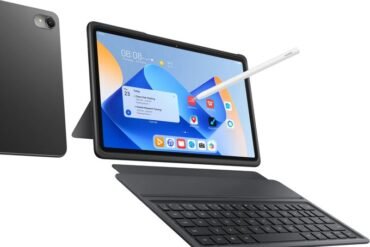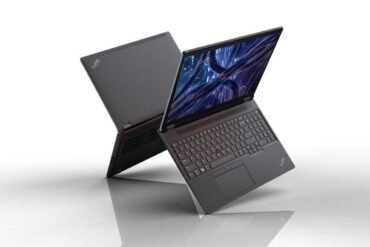Motherboard Form Factors: Which Fits Your PC Build?
Table of Contents
Introduction: Understanding Motherboard Form Factors
When building a PC, one of the most crucial components to consider is the motherboard. The motherboard acts as the central hub, connecting all the other components and allowing them to communicate with each other. However, not all motherboards are created equal, and understanding the different form factors is essential in ensuring compatibility and optimal performance for your PC build.
A motherboard’s form factor refers to its physical size, shape, and layout. Different form factors are designed to fit various cases and accommodate different numbers of components. By choosing the right form factor, you can ensure that your motherboard fits perfectly within your chosen case and supports the necessary components for your build.
Here are some commonly used motherboard form factors and their key features:
- ATX (Advanced Technology eXtended): ATX is the most popular and widely used form factor. It offers a standard size and layout, providing ample room for expansion slots and connectors. ATX motherboards are compatible with ATX cases while offering a good balance between size and functionality.
- Micro-ATX (mATX): Micro-ATX motherboards are smaller than ATX but still offer a decent amount of expansion slots. These boards are suitable for compact builds or when space is limited. They are compatible with both ATX and micro-ATX cases.
- Mini-ITX: Mini-ITX is the smallest form factor available. These motherboards are perfect for small form factor builds, HTPCs (Home Theater PCs), or when you prioritize portability. Mini-ITX boards have limited expansion slots and connectors compared to ATX or micro-ATX.
Choosing the right motherboard form factor is crucial for your PC build. It determines the compatibility of your components and the overall size and layout of your system. Before making a decision, consider factors such as the size of your case, the number of expansion slots and connectors you require, and any specific features you need.
In this article, we will delve deeper into each motherboard form factor, exploring their pros and cons, and providing guidance on which form factor best suits your specific needs.
ATX Form Factor: The Standard Choice
When it comes to choosing a motherboard form factor for your PC build, the ATX (Advanced Technology eXtended) form factor is the most popular and widely used. It has become the standard choice for many enthusiasts and professionals alike. Here’s why:
- Size and Expandability: ATX motherboards are larger in size compared to other form factors, providing more space for expansion slots, RAM slots, and connectors. This allows for greater flexibility in terms of adding extra components such as graphics cards, sound cards, and storage devices.
- Compatibility: Being the most common form factor, ATX motherboards are compatible with a wide range of PC cases, making it easier to find a suitable case for your build. This compatibility extends to power supplies, cooling solutions, and other components, ensuring a seamless integration.
- Support for Multiple GPUs: ATX motherboards typically offer multiple PCIe slots, allowing for the installation of multiple graphics cards in SLI or CrossFire configurations. This is particularly beneficial for gamers and content creators who require extra graphical processing power.
- Robust Power Delivery: ATX motherboards often come equipped with robust power delivery systems, including multiple power phases and high-quality capacitors. This ensures stable power distribution to the CPU and other components, which is essential for reliable and efficient performance.
- Availability of Features: ATX form factor boards tend to offer a wide array of features, including a generous number of USB ports, SATA connectors, and M.2 slots. This allows for greater flexibility in terms of connecting peripherals and storage devices, catering to various user needs.
In conclusion, the ATX form factor remains the standard choice for most PC builders due to its size, compatibility, expandability, support for multiple GPUs, robust power delivery, and availability of features. Whether you’re a gamer, professional, or casual user, an ATX motherboard provides a solid foundation for your PC build.
Micro-ATX Form Factor: Compact and Versatile
The Micro-ATX form factor is a popular choice for many PC builders due to its compact size and versatile nature. It offers a balance between the larger ATX form factor and the smaller Mini-ITX form factor, making it suitable for a wide range of PC builds.
Here are some key features and benefits of the Micro-ATX form factor:
- Size: Micro-ATX motherboards are smaller than standard ATX motherboards, measuring about 9.6 inches by 9.6 inches. This smaller size allows for more compact PC builds, making it an excellent choice for those who have limited space.
- Expansion Slots: Despite its smaller size, the Micro-ATX form factor still offers multiple expansion slots. Typically, it includes four expansion slots, allowing users to install additional components such as graphics cards, sound cards, and Wi-Fi cards.
- Compatibility: Micro-ATX motherboards are compatible with a wide range of computer cases, making it easy to find a suitable case for your build. They can fit into both Micro-ATX and ATX cases, providing flexibility in terms of case selection.
- Cost-Effective: Micro-ATX motherboards are generally more affordable compared to their ATX counterparts. This makes them a great choice for budget-conscious builders who still want to have some flexibility in terms of expansion options.
- Power: Micro-ATX motherboards can support a variety of processors, including both high-end and budget-friendly options. This means you can build a powerful gaming rig or a budget-friendly office PC using a Micro-ATX motherboard.
In conclusion, the Micro-ATX form factor offers a compact and versatile solution for PC builders. Its smaller size, multiple expansion slots, compatibility with various cases, cost-effectiveness, and wide processor compatibility make it a popular choice for a wide range of PC builds. Whether you are building a gaming rig or a budget-friendly office PC, the Micro-ATX form factor is worth considering.
Mini-ITX Form Factor: Size Matters
The Mini-ITX form factor is a compact motherboard size that has gained popularity among PC builders in recent years. Measuring just 170mm x 170mm, it is the smallest form factor available, making it ideal for small form factor (SFF) PC builds, HTPCs, and other space-constrained setups.
Despite its small size, Mini-ITX motherboards offer a surprising amount of functionality. They typically feature a single PCIe slot for a graphics card or other expansion cards, two slots for RAM modules, and a range of connectivity options, including USB ports, SATA connectors, and audio jacks.
One of the key advantages of the Mini-ITX form factor is its versatility. It can be used in a variety of PC builds, from low-power media centers to high-performance gaming rigs. With advancements in technology, Mini-ITX motherboards now support powerful processors and can accommodate high-end graphics cards, allowing for impressive gaming experiences in a small footprint.
While the compact size offers flexibility, it also presents some challenges. The limited space on a Mini-ITX motherboard may result in less room for expansion and fewer RAM slots compared to larger form factors. Additionally, cramped components may lead to higher temperatures and reduced airflow, requiring careful consideration when choosing cooling solutions.
However, Mini-ITX motherboards come with their own set of benefits. Their compact size and lightweight nature make them highly portable, making them an excellent choice for LAN parties or gaming on the go. They are also favored by users who prefer a minimalist aesthetic, as they can be easily integrated into small and sleek PC cases.
When choosing a Mini-ITX motherboard, it is essential to consider your specific needs and intended usage. If space is a primary concern, and you are willing to compromise on expandability to achieve a smaller footprint, the Mini-ITX form factor is an excellent choice. It offers a balance between size and functionality, allowing you to create a powerful PC build without sacrificing too much in terms of performance.
- Compact size ideal for SFF builds and HTPCs
- Versatile functionality with PCIe slots, RAM slots, and connectivity options
- Supports powerful processors and high-end graphics cards
- Potential challenges include limited expansion and airflow
- Highly portable and suitable for LAN parties or gaming on the go
- Minimalist aesthetic fits well in small and sleek PC cases
Extended ATX Form Factor: Powerhouse Builds
The Extended ATX (EATX) form factor is designed for high-end, powerhouse PC builds that require extensive hardware and expansion options. It provides ample space for multiple graphics cards, storage devices, and other components, making it ideal for gaming enthusiasts, content creators, and professionals who demand maximum performance.
Some key features of the Extended ATX form factor include:
- Size: EATX motherboards are larger than the standard ATX form factor, measuring around 12 x 13 inches. The increased size allows for additional slots and connectors, accommodating more powerful hardware.
- Expansion Slots: EATX motherboards typically offer more expansion slots than other form factors, allowing for multiple graphics cards, RAID controllers, and other add-in cards. This makes them ideal for multi-GPU setups and workstation-grade builds.
- Power Delivery: EATX motherboards often come with enhanced power delivery systems, including multiple power phases and higher-quality voltage regulators. This ensures stable power delivery to power-hungry components and overclocking capabilities.
- Connectivity: EATX boards provide a wide range of connectivity options, including multiple USB ports, SATA connectors, M.2 slots, and even onboard Wi-Fi and Bluetooth. This allows for extensive storage options and seamless connectivity with peripherals.
- Cooling Solutions: With more space for additional cooling solutions, EATX boards often feature multiple CPU fan headers, additional case fan connectors, and support for liquid cooling setups. This ensures efficient heat dissipation, even during intense workloads.
While the Extended ATX form factor offers exceptional performance and expandability, it’s important to note that it requires a larger computer case to accommodate its size. Additionally, EATX motherboards are typically more expensive than standard ATX boards, so they may not be suitable for budget-oriented builds.
If you’re planning to build a high-performance gaming rig, a powerful workstation, or a content creation machine, the Extended ATX form factor provides the necessary features and flexibility to meet your demanding requirements.
























